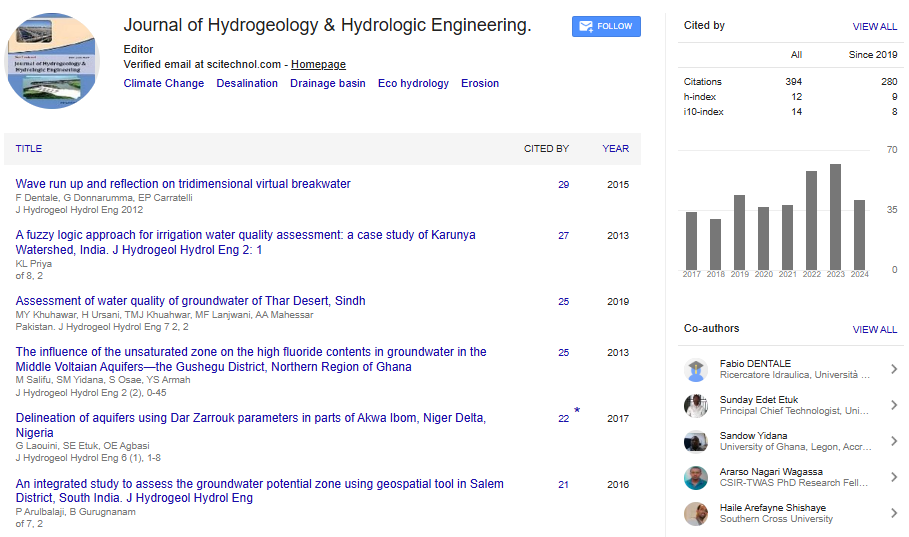Research Article, J Hydrogeol Hydrol Eng Vol: 5 Issue: 1
Morphometric Characteristics and Water Resource Management of Tista River Basin Using Remote Sensing and GIS Techniques
| Malay Kumar Pramanik* |
| Centre for International Politics, Organization and Disarmament (CIPOD), School of International Studies, Jawaharlal Nehru University, New Delhi-110067, India |
| Corresponding author : Malay Kumar Pramanik Centre for International Politics, Organization and Disarmament (CIPOD), School of International Studies, Jawaharlal Nehru University, New Delhi-110067, India Email: malaygeo@gmail.com, malay65_ise@jnu.ac.in. |
| Received: November 23, 2015 Accepted: February 10, 2016 Published: February 17, 2016 |
| Citation: Pramanik MK (2016) Morphometric Characteristics and Water Resource Management of Tista River Basin Using Remote Sensing and GIS Techniques. J Hydrogeol Hydrol Eng 5:1. doi:10.4172/2325-9647.1000131 |
Abstract
The present study analyzes the significance of satellite images and digital elevation model (DEM) for the assessment of fluviological characteristics and the extraction of morphometric parameters for the Tista watershed of India and Bangladesh. Hydrological characteristics, such as topographic parameters, drainage attributes, and the land use, land cover pattern were evaluated for the water resource management of the watershed area. Hydrology tool box of Arc GIS and Erdas Imagine software were used for the delineation of the watershed and the calculation of morphometric characteristics using SRTM DEM. The drainage density of the basin has been found very low indicates that the watershed possesses with low permeable soils and medium to very high relief. The stream order of the area ranges from first to sixth order showing semi dendritic and radial drainage pattern that indicates the heterogeneity in textural characteristics and also influenced by structural characteristics in the study area. The bifurcation ratio (Rb ) of the basin ranges from 0.82 to 2.27, and the mean bifurcation ratio is 1.66 of the entire study area that signifies that lithological and geological structure much more controls the drainage pattern of the entire basin. The elongation ratio is 0.21 which indicates that the shape of the basin belongs to the narrow and elongated shape. Land use and land cover map were generated by using latest available Landsat images where the watershed covers under the settlement, agricultural land, forest, fallow land, water body, alluvial deposit and snow cover.The study reveals that hydrological evaluation using SRTM DEM is more precise and applied with compared to other techniques at the watershed scale.
 Spanish
Spanish  Chinese
Chinese  Russian
Russian  German
German  French
French  Japanese
Japanese  Portuguese
Portuguese  Hindi
Hindi 
